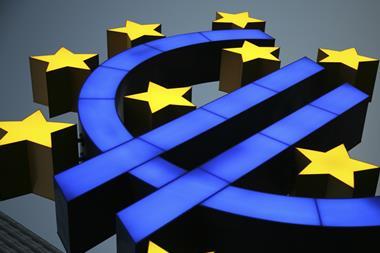Once the US Federal Reserve is all “tapered out”, the market will be asking what comes next, industry experts have warned.
The Fed’s announcement last year that the time had come to phase out quantitative easing triggered a collective knee-jerk reaction in the markets.
The panic has since subsided, and investors are getting used to the idea of ‘tapering’, as the Fed has dubbed the gradual withdrawal of its unprecedented accommodative measures.
In a recent statement, Alan Brown, senior adviser at Schroders, said: “With each new round of tapering, the effect on the market further diminishes.”
But that does not mean the risk of a market shock has vanished, some experts say – quite the contrary.
If the Fed continues to ‘taper’ as planned, the US will have ended its easing programme completely after the summer.
At a recent press meeting in Amsterdam, Asoka Wöhrmann, co-CIO at Deutsche Asset & Wealth Management, said: “This autumn, the Americans will be all tapered out. Then the market will ask ‘what’s next?’
“Quite possibly, the next step will be an interest rate rise. That would actually be the first ‘normal’ monetary action the Fed would take, but even so, it’s something the market is not accustomed to anymore, so this will once again trigger a panic reaction in the markets.”
He added: “This will lead to a steepening of the front end of the curve and have a huge impact on the dollar. There will be a lot of volatility in the fall of 2014.”
In addition, he expects an uncoupling of European Central Bank (ECB) and Fed strategies.
“The ECB will have to step up its accommodative measures even as the Fed tapers its quantitative easing programme,” Wöhrmann said.
He fully believes the ECB can and will take the necessary steps.
“The credit crunch in Europe’s periphery will be the single most important hurdle to European growth in the next two years,” he said.
“The ECB has no choice but to take action – it is crucial to revitalise small and mid caps in peripheral Europe.”
The ECB has several means at its disposal other than ‘classic’ monetary easing, which would not work because of the divergence within the European Union between the periphery and the core countries.
“The ECB might buy corporate bonds or further relax collateral – this will happen,” Wöhrmann said.
“And if the euro should rise above $1.40, then the ECB will consider a negative overnight rate.”
Wöhrmann sees the intended European banking union as a landmark step.
“All the rest will follow,” he said.
But Dominic Rossi, CIO at Fidelity, is not so sure.
“I would add that the ECB is in the midst of a policy error,” he said.
“They should be much more accommodative already. One clear sign of that is the euro – the currency needs to fall.
“I take issue with the ECB failure to act. They could do more, they should do more, and they should do it now.”
According to Rossi, “there is no guarantee that, in six months’ time, the ECB will not continue to make the same mistakes”.
Wöhrmann is a bit milder in his judgment.
“Because of the divergence within the monetary union, the ECB is in a very difficult position, indeed,” he said.
“Conventional monetary policy will not work, as any accommodative measures aimed at aiding the periphery will anger the stronger core countries, particularly Germany.
“Really, the ECB’s only option is to adopt a form of ‘QE light.”
The ECB might leverage instruments including ABS, corporate bonds and covered bonds to revitalise small and mid-cap companies in the periphery.
“The ECB must do more, and I have no doubt they will,” Wöhrmann said.
“Europe cannot afford the social unrest that would surely result if they don’t.”

















No comments yet